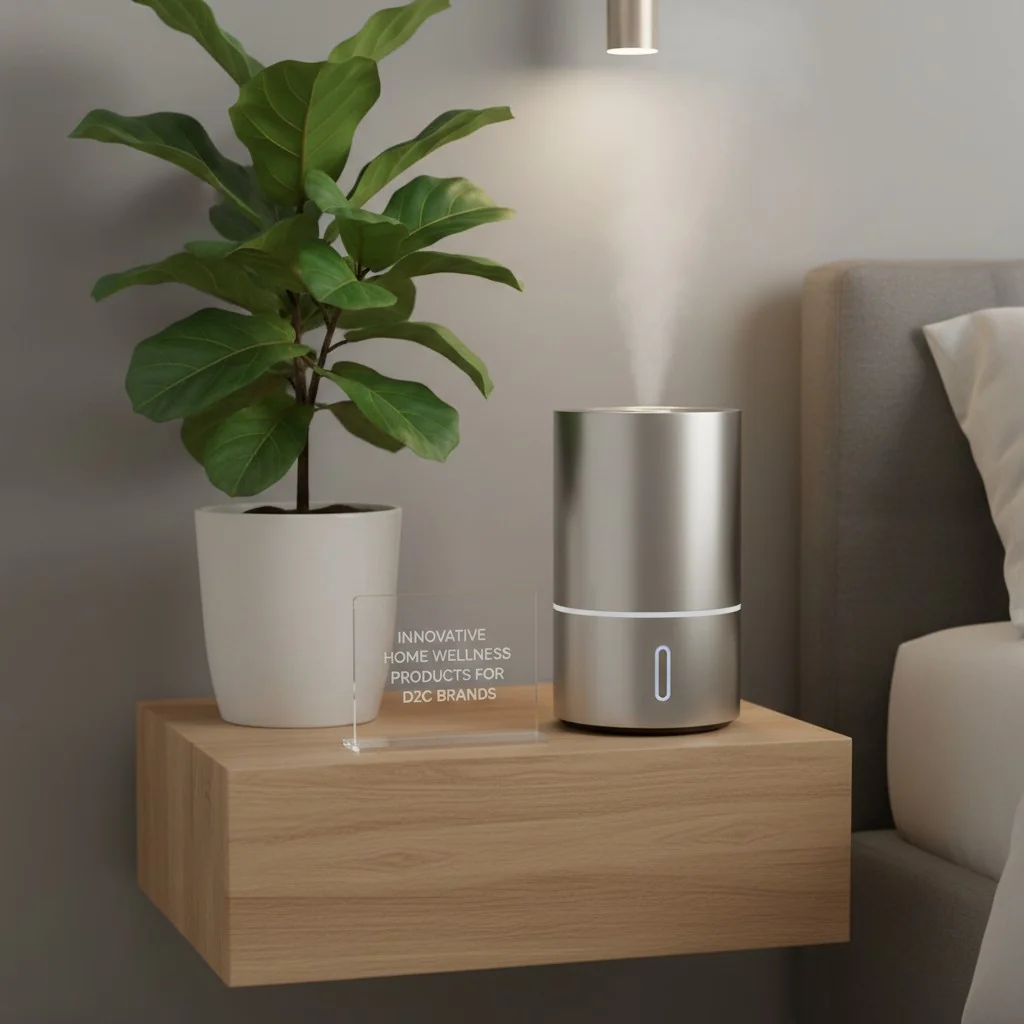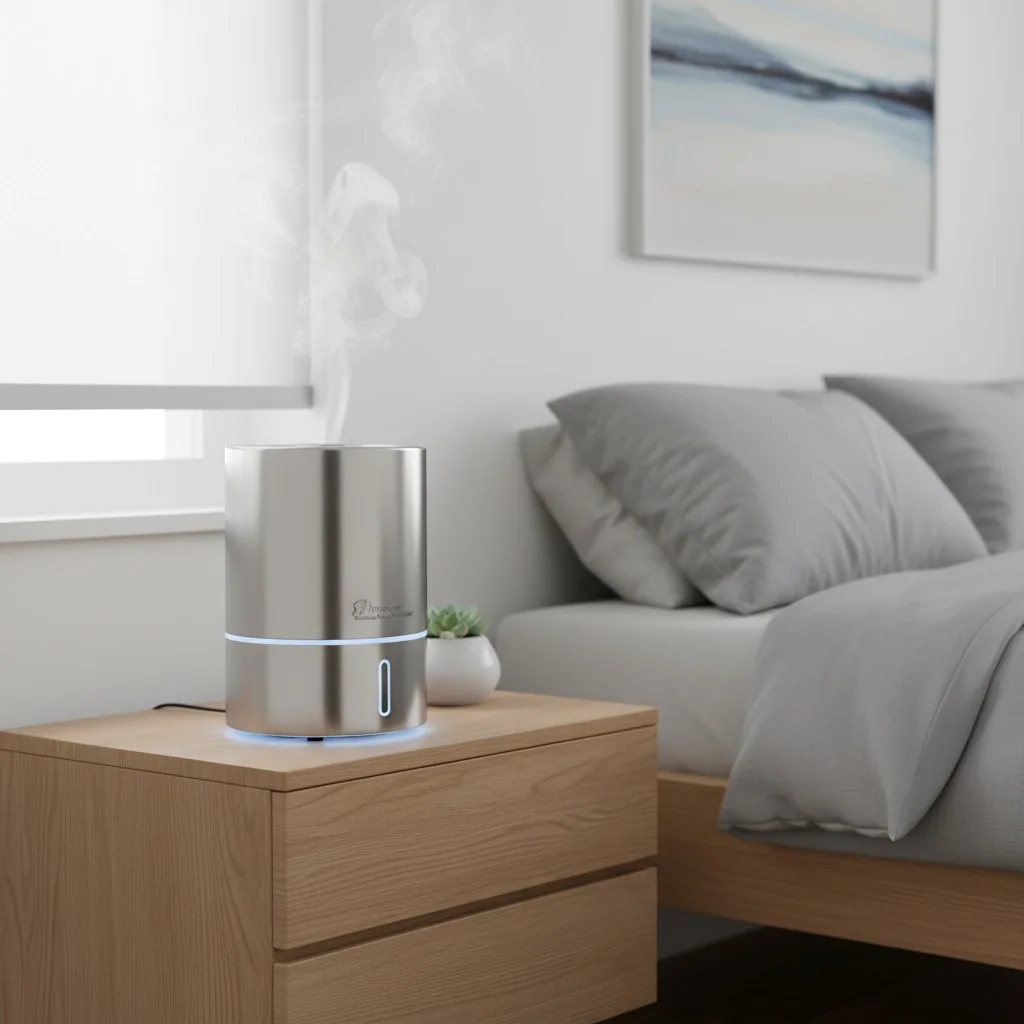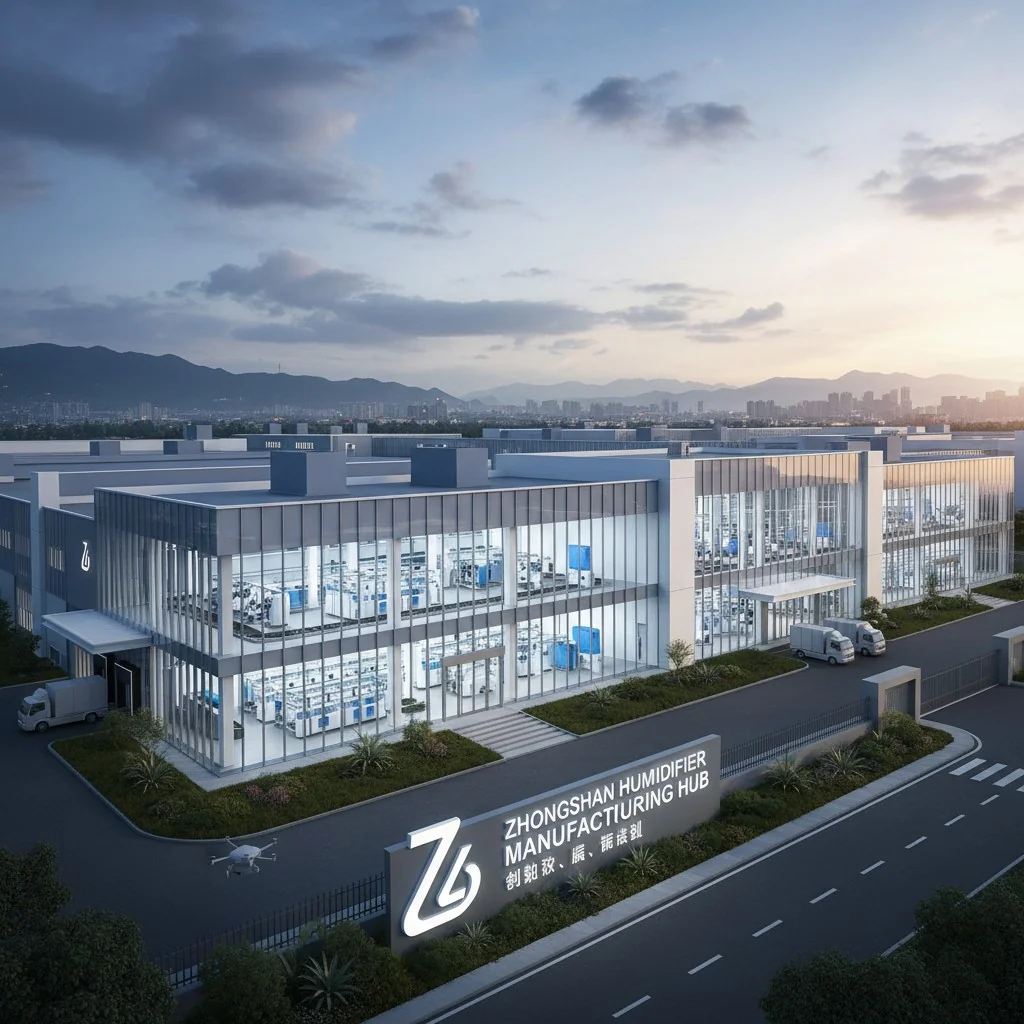
Explorar el mercado de los purificadores de aire se asemeja a una emocionante aventura con mucho potencial. Este viaje encierra muchas posibilidades.
Poner en marcha una marca de purificadores de aire en EE.UU. requiere una inversión de entre $50.000 y $100.000 durante el primer año. Esta cantidad cubre el desarrollo del producto y el inventario. También incluye los esfuerzos de marketing y ventas B2B.
Estas cifras pueden confundirte al principio. Recuerdo esa sensación cuando empecé con HisoAir. Entender estos costes puede enseñarle mucho. Gastar dinero en el desarrollo de productos ayuda a que sus purificadores de aire sean únicos. La gestión de inventarios y existencias ayuda a que su negocio funcione sin problemas. El marketing actúa como tu altavoz, especialmente en sitios como Amazon y Shopify, por lo que el dinero para anuncios es crucial. Los gastos para ferias y viajes importan si te fijas en las ventas B2B. Hay mucho que gestionar. Sin embargo, con una planificación cuidadosa y un poco de coraje, comenzar tu marca de purificadores de aire es muy gratificante.
Lanzar una marca de purificadores de aire requiere entre 50 000 y 100 000 USD en el primer año.Verdadero
El contexto especifica esta horquilla como la inversión inicial necesaria.
HisoAir utiliza la tecnología Decibel Cancellation™ en sus purificadores.Verdadero
HisoAir integra esta tecnología para un rendimiento óptimo.
¿Cuáles son los principales costes del desarrollo de un producto?
¿Se ha preguntado alguna vez dónde desaparece su dinero cuando crea un producto?
Los gastos de desarrollo de un producto abarcan la investigación y el desarrollo, el diseño, la creación de prototipos, las pruebas, la fabricación, la comercialización y la entrega. Un presupuesto bien repartido entre estas etapas es crucial para el éxito del lanzamiento. La clave está en gastar bien.
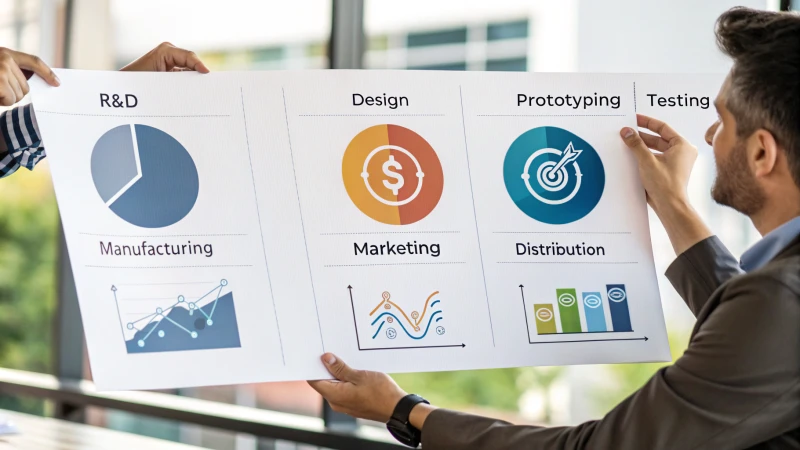
Costes de Investigación y Desarrollo (I+D)
I+D es donde empieza mi viaje, sentando las bases con características especiales. Es como trazar un plan para el éxito. La investigación de mercado me parecía un trabajo detectivesco, intentando averiguar qué necesita realmente la gente y cómo podría ofrecer algo único. Los estudios de viabilidad me servían de control para asegurarme de que mi sueño era realista.
| Actividades de I+D | Coste estimado |
|---|---|
| Estudios de mercado | $5,000 - $20,000 |
| Estudios de viabilidad | $10,000 - $30,000 |
Costes de diseño y creación de prototipos
La fase de diseño es cuando las ideas se hacen visibles y reales. Esta parte me pareció emocionante pero dura. Contratación servicios profesionales de diseño1 convierte una simple idea en un producto listo para el mercado. La creación de prototipos es como dar vida a tus diseños, vital antes de empezar la producción a gran escala.
| Actividades de diseño | Coste estimado |
|---|---|
| Diseño industrial | $5,000 - $25,000 |
| Creación de prototipos | $10,000 - $50,000 |
Costes de ensayo y certificación
Las pruebas demuestran que su producto cumple las expectativas. Esta fase es muy importante, es como hacer un examen final a tu creación. Obtener certificaciones a veces es como ganar insignias que demuestran que el trabajo duro ha merecido la pena.
| Actividades de ensayo | Coste estimado |
|---|---|
| Pruebas funcionales | $5,000 - $15,000 |
| Certificación de seguridad | $5,000 - $20,000 |
Costes de fabricación
La fabricación convierte tu visión en algo real. Aquí vi cómo mi sueño se hacía realidad. Manejar los materiales y la mano de obra con prudencia afecta realmente a los costes. Los socios fiables deciden el éxito de sus plazos y presupuestos.
| Actividades de fabricación | Coste estimado |
|---|---|
| Herramientas | $10,000 - $40,000 |
Gastos de comercialización y distribución
El marketing conecta su producto con su público. Crear una estrategia de marketing por primera vez fue como planear una gran revelación. Una buena publicidad puede cambiar el éxito de un extremo a otro.
| Actividades de marketing | Coste estimado |
|---|---|
| Publicidad digital | $2,000 - $10,000 |
Equilibrar la calidad con el coste en todas estas etapas es un arte que he aprendido a respetar. Conocer estos gastos me mantuvo en el buen camino y preparado para lanzar un producto con éxito.
Lanzar una marca de purificadores de aire en EE.UU. cuesta entre 50.000 y 100.000 dólares.Verdadero
La inversión inicial incluye la compra de acciones, el desarrollo del producto y la comercialización.
HisoAir utiliza la tecnología Decibel Cancellation™ en sus purificadores de aire.Verdadero
HisoAir integra funciones avanzadas como Decibel Cancellation™ para un rendimiento óptimo.
¿Cuánto debe presupuestar para inventario y existencias?
¿Mira usted a veces una hoja de cálculo, tratando de entender cuánto inventario se necesita? Los empresarios saben que se trata de un acto de equilibrio.
Planifico mi presupuesto para inventario en función del tipo de producto y de cuánta competencia existe en el mercado. Las condiciones de los proveedores también importan mucho. Las previsiones de ventas también ayudan en este proceso. Normalmente, el 25-40% de todo mi presupuesto se destina al inventario. Esto es realmente importante. Es un porcentaje significativo del presupuesto.

Entender el tipo de producto y las necesidades del mercado
En el negocio de la purificación del aire, aprendí rápidamente que el tipo de producto que vendía afectaba profundamente a mis decisiones presupuestarias. Imagínate lanzar un pequeño purificador de aire en un mercado ya saturado. Destacar exige algo más que un diseño elegante. Las características únicas exigen gastar más en el producto. desarrollo2. El presupuesto para el stock inicial era crucial porque podía hacer o deshacer la marca. Era muy importante.
Condiciones para proveedores e inversión inicial
Encontrar un buen proveedor es como encontrar oro. Desde el principio, me di cuenta de que era necesario conseguir buenas condiciones. Las cantidades mínimas de pedido (MOQ) decidían cuánto invertía en inventario. Por ejemplo, 500 unidades a $60 cada una suponen $30.000 por adelantado, incluso sin contar costes de transporte y aranceles. Es una cantidad importante. Sin embargo, prever estos gastos probablemente ahorre problemas más adelante.
Previsiones de ventas y rotación de existencias
Las previsiones de ventas actuaban como mi bola de cristal. Me ayudaban a evitar el exceso o la escasez de existencias. Calculando el Índice de Rotación de Inventario (coste de los bienes vendidos dividido por el inventario medio), juzgaba lo bien que gestionaba las existencias.
| Ratio de rotación de existencias | Interpretación |
|---|---|
| Abajo 2 | Riesgo de exceso de existencias |
| De 2 a 4 | Volumen de negocios saludable |
| Arriba 4 | Posibles carencias |
Este análisis me permitió ajustar mi presupuesto para tener suficientes productos para satisfacer la demanda sin bloquear demasiado dinero. Era esencial.
Los costes de marketing repercuten en el presupuesto de existencias
El marketing era otra parte importante. Plataformas como Amazon se convirtieron en mis favoritas, con anuncios que costaban $4-$5 por clic. Con una tasa de conversión de 10%, pronto vi la necesidad de presupuestar $100-$200 diarios para mantener el flujo de tráfico. Estos costes de marketing afectaban directamente a mi inventario3 necesidades, ya que vender más significaba tener suficientes productos preparados.
Presupuestar el inventario no era sólo cuestión de números; implicaba comprender el impacto de cada parte en mi trabajo. Teniendo en cuenta todo, desde el tipo de producto hasta los planes de marketing, se reservaron fondos para mantener las operaciones sin problemas y sin excederse.
Aprovechar la tecnología para presupuestar
La introducción de programas de presupuestación en mi rutina lo cambió todo. Estas herramientas ofrecían un seguimiento de las existencias en tiempo real y alertas automáticas de nuevos pedidos. Me mantuvieron a la cabeza del competitivo mercado.
Al fusionar las estrategias con la tecnología, desarrollé un sólido plan presupuestario que respaldó el crecimiento y la sostenibilidad a lo largo de mi trayectoria empresarial.
Lanzar una marca de purificadores de aire requiere $50K-$100K en el primer año.Verdadero
La inversión inicial incluye la compra de acciones, el desarrollo del producto y la comercialización.
Los anuncios de Amazon cuestan $4-$5 por clic con una tasa de conversión de 10%.Verdadero
Este es el coste medio y la tasa de conversión de la publicidad en Amazon.
¿Cuáles son los gastos de marketing para vender en Amazon y Shopify?
Navegar por el laberinto de los gastos de marketing en Amazon y Shopify es un poco como armar un rompecabezas.
Cuando venda en Amazon, prepárese para asignar fondos para PPC anuncios con precios en torno a $4-5 por clic. Shopify necesita inversión en anuncios en redes sociales y SEO en su lugar. Ambas plataformas necesitan un presupuesto cuidadoso. Esto es crucial para alcanzar el éxito. Presupuestar es esencial.
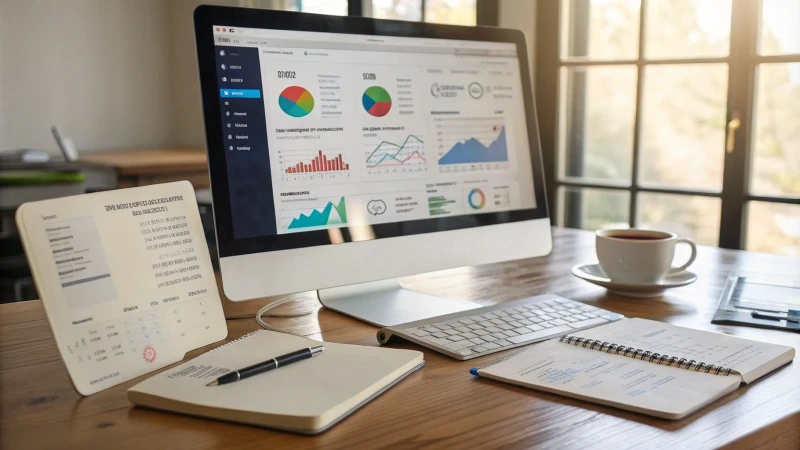
Exploración de los costes publicitarios de Amazon
Vender en Amazon introdujo un nuevo mundo de PPC (pago por clic). Cada clic cuesta alrededor de $4-5, y con sólo 10% de posibilidades de venta, me di cuenta de que necesitaba $100-200 diarios sólo para anuncios. Otros costes incluyen las comisiones de referencia de Amazon y Fulfillment by Amazon (FBA), que varían en función de la categoría y el tamaño del producto. Calculé cuidadosamente cada comisión para no limitarme a cubrir gastos y obtener realmente beneficios. Cada comisión era importante porque el beneficio era esencial.
Enfoque de marketing de Shopify
Cambiar a Shopify fue como descubrir nuevas oportunidades. La plataforma permite libertad con las estrategias de marketing. Me centré en anuncios en redes sociales4Utilizando Instagram y Facebook para atraer visitantes. Este método parecía más personal y menos aterrador en cuanto a costes, con campañas iniciales de alrededor de $2000. Prestar atención a la optimización de motores de búsqueda (SEO) fue muy importante para el alcance natural. A diferencia de Amazon, Shopify no cobra comisiones por listados, pero los temas, las aplicaciones y las comisiones por tarjetas de crédito se acumulan.
Comparación de gastos de marketing: Amazon vs. Shopify
| Tipo de gasto | Amazon | Shopify |
|---|---|---|
| Publicidad | PPC ($4-5/clic) | Redes sociales y SEO (variado) |
| Tasas de plataforma | Remisión & FBA tarifas | Comisiones de suscripción y transacción |
| Costes adicionales | Tasas de inscripción | Aplicaciones y temas |
Comprender estas diferencias me ayudó a asignar los presupuestos de forma inteligente y a elegir la plataforma adecuada en función de mis necesidades. objetivos empresariales5. A veces, utilizar ambas plataformas era probablemente la mejor opción.
Presupuestos estratégicos para el éxito del comercio electrónico
Para obtener los mejores rendimientos, aprendí a planificar bien los gastos de marketing en ambas plataformas. Siempre analicé aspectos como las tasas de conversión y el retorno de la inversión publicitaria (ROAS). Probando diferentes tipos de anuncios y ajustando los presupuestos en función de los resultados, conseguimos mejores resultados. Consejos de expertos en comercio electrónico6 me ayudó a mejorar mis estrategias y a obtener información para seguir creciendo en este mercado tan competitivo. Conocer los cambios de la plataforma mantuvo mis tácticas de marketing eficaces y actualizadas.
Lanzar una marca de purificadores de aire requiere $50K-$100K en el primer año.Verdadero
Esto es cierto, ya que la inversión inicial incluye los costes de existencias, desarrollo del producto y comercialización.
Los anuncios de Amazon cuestan $4-$5 por clic con una tasa de conversión de 10%.Verdadero
El coste medio por clic en Amazon es de $4-$5 con una tasa de conversión de 10%.
¿Son las ferias comerciales una inversión inteligente para las ventas B2B?
¿Se pregunta a menudo si esas ferias tan concurridas merecen la pena por el elevado coste que suponen para su plan de ventas B2B?
Sí, asistir a ferias comerciales es una muy buena inversión para las ventas B2B. Estos eventos ofrecen importantes oportunidades de encontrar nuevos clientes. También ayudan a mostrar su marca a muchas personas. Aquí también se establecen contactos con otras personas del sector. Es importante comprobar los costes y si el evento se ajusta a su estrategia.

Evaluación de costes y beneficios
Cuando empecé a plantearme ir a ferias, me sorprendieron los elevados costes. Gastos como los honorarios del stand y los viajes eran cuantiosos, más de $50.000. Me parecía abrumador. Sin embargo, el potencial7 para el retorno de la inversión (ROI) a través de nuevos clientes potenciales podía reportar buenos beneficios. De repente, todo parecía más claro.
Oportunidades de trabajo en red
Las ferias comerciales son como una gran fiesta para las empresas. La primera vez me sentí nerviosa y emocionada a la vez. Conocer a otras personas del sector no era sólo para encontrar clientes, sino también para establecer contactos que pudieran dar lugar a futuros proyectos y colaboraciones. El valor de ampliar mi red profesional era enorme.
| Beneficios | Detalles |
|---|---|
| Generación de clientes potenciales | Acceso a un gran número de clientes potenciales |
| Visibilidad de la marca | Oportunidad de exponer productos y servicios |
| Estudios de mercado | Información sobre las tendencias del sector y la competencia |
Consideraciones estratégicas
No todas las ferias son iguales. Elegir las que se ajustan a mis objetivos ha demostrado ser importante. Me dirijo a eventos en los que estará presente mi público ideal. Esta estrategia cambia mucho los resultados, ya que se trata de elegir realmente el derecho8 encajar.
Uso de la tecnología
La incorporación de herramientas digitales lo cambió todo para mí. La incorporación de elementos como los stands virtuales y la retransmisión de charlas en directo me ayudó a llegar a más gente que antes, acercando el evento a quienes no estaban allí en persona.
Para cualquier empresa B2B que esté pensando en celebrar ferias comerciales, probablemente sea muy importante una planificación muy detallada. Comparar posibles beneficios y costes, probar nuevas ideas y utilizar espacios reales y digitales puede mejorar la eficacia de un evento. Mi experiencia demuestra que, con un plan inteligente, las ferias comerciales se convierten en algo más que un simple gasto de dinero: son realmente una inversión en el crecimiento futuro.
Lanzar una marca de purificadores de aire en EE.UU. cuesta entre $50K y $100K.Verdadero
El contexto esboza una horquilla de inversión estimada para el lanzamiento de la marca.
Los anuncios de Amazon cuestan $4-5 por clic con una tasa de conversión de 10%.Verdadero
El contexto especifica estos costes medios y tasas de conversión para los anuncios de Amazon.
Conclusión
Lanzar una marca de purificadores de aire en EE.UU. requiere una inversión de $50.000 a $100.000 para el desarrollo del producto, inventario y esfuerzos de marketing en el primer año.
-
Descubra cómo los servicios de diseño profesional mejoran el atractivo y la funcionalidad de los productos. ↩
-
Explore cómo la inversión en características de producto únicas mejora la competitividad y justifica la asignación presupuestaria. ↩
-
Descubra cómo unas estrategias de marketing eficaces pueden optimizar los niveles de inventario y mejorar el rendimiento de las ventas. ↩
-
Explora estrategias efectivas para usar anuncios en redes sociales para atraer tráfico a tu tienda Shopify. ↩
-
Aprenda métodos para identificar su mercado objetivo, crucial para alinear los esfuerzos de marketing con las necesidades de la audiencia. ↩
-
Comprenda cómo los expertos en consultoría pueden mejorar sus estrategias de comercio electrónico y mejorar el rendimiento de la inversión. ↩
-
Haciendo clic en este enlace podrá comprender cómo las ferias comerciales pueden impulsar significativamente la generación de contactos, un aspecto esencial de las ventas B2B. ↩
-
Este enlace ofrece orientación sobre la elección de ferias que se ajusten a los objetivos empresariales, optimizando su inversión. ↩


